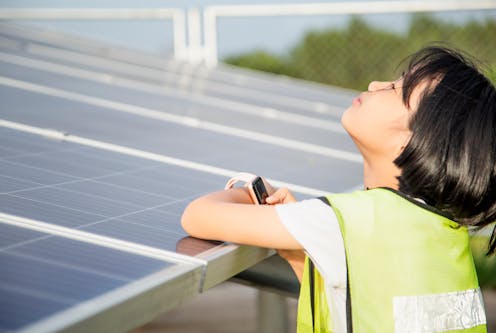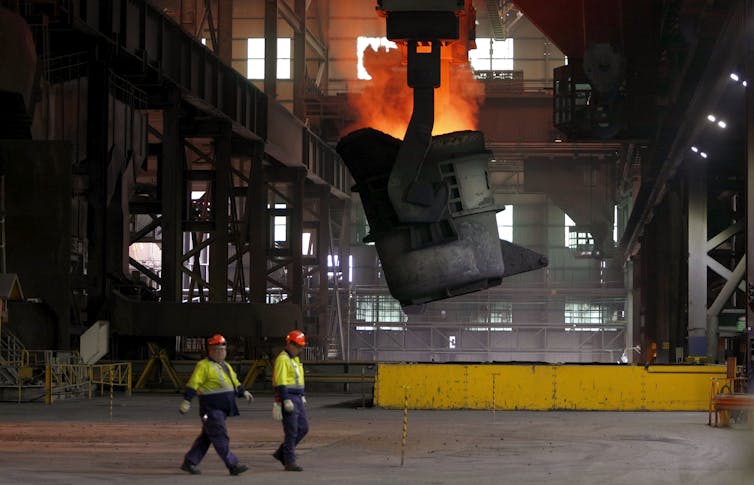
The federal government this week tasked an expert panel with making Australia’s largest grid, the National Electricity Market, fit for our changing energy system.
Reform is badly needed. Australia is trying to transition to renewable energy using rules established in 1998 – when the energy mix was dominated by coal-fired power and energy use was more predictable.
The review is welcome. But unless its scope is sufficiently broad, it risks failing to address all the issues plaguing Australia’s electricity system. Below, we outline three priorities for the panel to include in its work.
Getting this right is important. It could secure jobs, lower bills, shore up industries, and help Australia unlock its full potential in a net-zero economy.

An electricity system fit for the future
The National Electricity Market is both a wholesale electricity market (where electricity is bought and sold) and a physical power system (including generators, transmission lines, poles and wires). It operates everywhere in Australia except Western Australia and the Northern Territory.
The government-appointed panel is tasked with examining the wholesale market. Its remit covers matters such as:
- electricity reliability
- how the system interacts with governments’ renewable energy policies
- decarbonising electricity to reach Australia’s emissions reduction targets.
- how the reforms might be implemented.
This remit risks missing a window to expand Australia’s export economy.
Our research shows Australia’s energy grid needs to be double the size of what’s currently planned if we’re to expand industries that run on clean energy, and start exporting renewable energy and products. Such expansion would help Australia thrive in a net-zero world.
That’s why we recommend the expert panel expand its review to the following three areas.

1. Match design with economy-wide ambition
Every two years, the Australian Energy Market Operator (AEMO) releases a 20-year roadmap for Australia’s electricity market. It’s formally known as the Integrated System Plan.
Currently, the market operator must base the plan on a scenario “most likely” to eventuate. This constraint risks tracking towards an energy grid half the size of what Australia needs.
Instead, the plan should be based on what could, and should, be done to meet the country’s climate ambition, while ensuring reliability and affordability.
The federal government wants new industrial activity – and its policies to achieve this will profoundly transform the energy system. At the heart of the planned Future Made in Australia policy, for example, is an ambition to become a “renewable energy superpower”.
Such intentions and policies should be included in Australia’s energy system planning. The current review is an opportunity to do this.
2. Pair national and local plans
Heavy industries contribute around 44% of Australia’s total emissions. They can get to net-zero by investing in cleaner technology, matched by new investment in renewable energy generation, transmission and storage.
The demand for electricity in these sectors is set to rise, so the time to act is now.
To help manage this shift, we have previously advocated for new “net zero industrial precincts” – physical clusters of investment in renewable energy and low-carbon technology. Businesses could share resources, talent and clean energy, creating efficiencies and reducing costs.
But such precincts require an energy system that meets future demand. Any solutions proposed by the expert panel should address this need.

3. Supercharge energy performance
So-called “energy performance” is also key to the energy transformation. It involves energy efficiency, electrification, and managing when energy is used.
These measures can help lower energy costs for consumers, ensure reliable energy and reduce the need for expensive new power infrastructure.
The current rules for the National Electricity Market are ill-suited to a system where energy is generated and stored in diverse locations, such as car batteries, rooftops and community battery facilities.
This risks stalling the deployment of new technologies, driving up costs and missing opportunities for consumers to access cleaner, more efficient energy solutions.
Energy performance is currently managed across different governments, departments and energy system players. Responsibility vested in a single body can ensure effective oversight. And rules around energy performance should be updated to recognise the need to rapidly decarbonise and decentralise energy systems.

Australia powering ahead
There is no escaping the energy transition ahead. Getting the settings right will define Australia’s role in a decarbonised global economy.
It would also lower energy bills. Poorly designed energy markets too often result in consumers paying more than they need to.
The panel should be allowed to fully consider how best to align the national energy system with Australia’s renewable energy and climate ambitions.
Anna Skarbek is on the board of the Centre for New Energy Technologies, the Green Building Council of Australia, and the Asia-Pacific Advisory Board of the Glasgow Financial Alliance on Net Zero. She was a member of the Net Zero Economy Agency Advisory Board, and is a member of the Grattan Institute’s energy program reference panel and the Blueprint Institute’s strategic advisory council. Anna Skarbek is CEO of Climateworks Centre which receives funding from philanthropy and project-specific financial support from a range of private and public entities including federal, state and local government and private sector organisations and international and local non-profit organisations. Climateworks Centre works within Monash University's Sustainable Development Institute.
Matthew Benetti does not work for, consult, own shares in or receive funding from any company or organisation that would benefit from this article, and has disclosed no relevant affiliations beyond their academic appointment.
This article was originally published on The Conversation. Read the original article.







